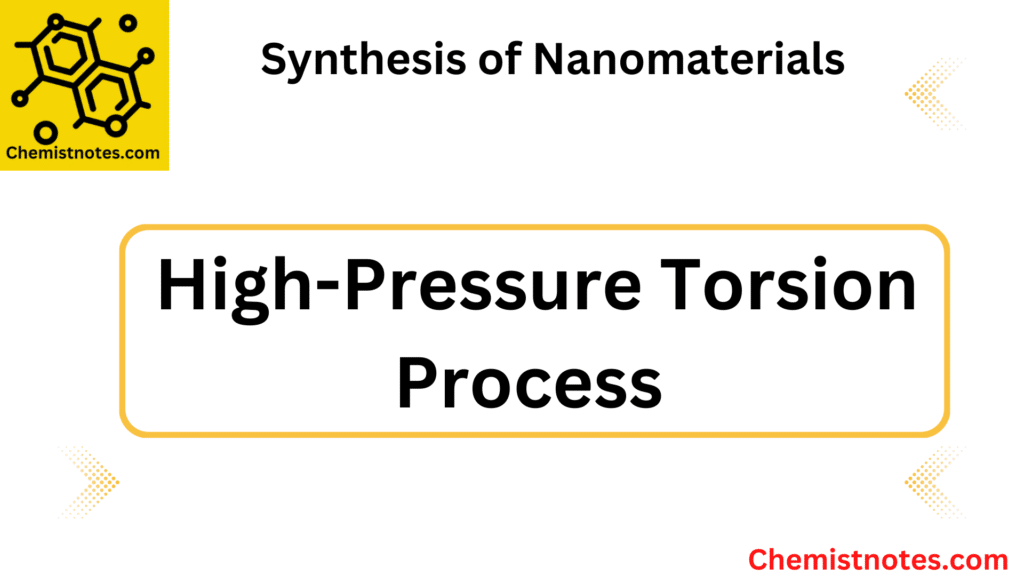Table of Contents
ToggleGreen synthesis of nanoparticles refers to the synthesis of 1-100 nm size ranged particles using plants without any use of chemicals. The exploration of plants’ potential in synthesizing these nanoparticles has been largely unexplored, primarily due to the extensive diversity of plant species. Nanoparticles possess antioxidant, antibacterial, and antimicrobial properties, rendering them viable contenders for implementation in various biomedical contexts. The green synthesis process exhibits enhanced efficiency, simplicity, and cost-effectiveness, enabling uniform capacity for larger-scale operations.
Green Synthesis of Nanoparticles
Although nanoparticles can be produced using a number of methods (physical, chemical, or biological), generating them by physical or chemical means raises toxicity and environmental hazards. The physical process (such as using a tube furnace) is very time-consuming, requires a lot of space, and produces a lot of heat, which raises the temperature in the area around the source material. The primary disadvantage of the chemical process of producing nanoparticles is the usage of hazardous solvents and chemicals, which could significantly impact our already fragile ecosystem. Hence, there emerged a global demand for an alternative approach to nanoparticle synthesis, which subsequently gave rise to the concept of green nanotechnology.
The nanoparticles produced in this process are devoid of any toxic substances and demonstrate environmentally friendly characteristics. There are various biological routes for the green synthesis of nanoparticles: bacteria-mediated, yeast-mediated, fungi-mediated, algae-mediated, actinomycetes-mediated, and plants-mediated synthesis of nanoparticles, and so on.
Plants-mediated synthesis of nanoparticles
The utilization of plant species for the production of nanoparticles has been referred to as a green synthesis approach and is considered the most dependable and environmentally sustainable approach. The three primary prerequisites for achieving an environmentally sustainable synthesis of nanoparticles (NPs) involve the careful consideration of a green or eco-friendly solvent, such as water, ethanol, or their combinations, alongside the selection of a non-toxic reducing agent and a safe stabilizing substance.
Various plant components, such as leaves, fruits, roots, stems, and seeds, have been extensively employed for the synthesis of diverse nanoparticles (NPs). Extracts from plants can really be used to create NPs of a specific size, shape, and chemical makeup. The extract of these plants contains a wide variety of phytochemicals, some of which may be useful as reducing or stabilizing agents in the manufacture of nanoparticles. Plant-derived nanoparticles have high biological potential with uses in agriculture, food science and technology, bioengineering, cosmetics or nanomedicine, and protecting human health, and are also less likely to cause harmful side effects in humans than chemically synthesized NPs.
Green synthesis of silver nanoparticles
The preparation of silver nanoparticles (AgNPs) derived from plant sources is considered to be relatively simple. The green synthesis of silver nanoparticles necessitates the utilization of a solution containing silver metal ions and a biological reducing agent. The most cost-effective and straightforward approach to generating silver nanoparticles (AgNPs) involves the reduction and stabilization of silver ions through the utilization of a combination of biomolecules, including polysaccharides, vitamins, amino acids, proteins, phenolics, saponins, alkaloids, and/or terpenes.
The majority of plant species involving Cycas, Ceratonia siliqua, Mukia maderaspatana, Pedalium murex, Tribulus terrestris, Syzygium cumuni, and so on possess the inherent capacity to be utilized for the synthesis of silver nanoparticles (AgNPs). They have several potential uses in the fields of medicine and industry.
Green synthesis of copper nanoparticles
Compared to Au and Ag, copper (Cu) is a more affordable metal and has been used to make CuNPs by reducing aqueous Cu ions with various plant extracts including Stereum hirsutum, Aloe Vera, Thymus vulgaris L., Psidium guajava L., and so on. They were formed, according to the presence of a 578 nm peak on a UV-visible spectrometer in particular. But there are still a lot of uncertainties regarding their biosafety.
Green synthesis of gold nanoparticles
Due to the potential medical applications, low toxicity, and excellent biocompatibility, as well as their ease of synthesis and surface functionalization, gold nanoparticles (AuNPs) have garnered a lot of attention. The production of gold nanoparticles requires the reduction of gold metal ions, which is accomplished by a number of chemical moieties in biogenic complexes acting as reducing agents. Research has shown that biomolecules such as flavonoids, phenols, proteins, and others have a significant role in lowering metal ion concentrations and coating gold nanoparticles in plant extracts.
Plants such as Aegle marmelos, Garcinia mangostana, G. mangostana, Mimosa tenuiflora, Azadirachta indica, Phyllanthus amarus, Terminalia chebula, etc. have been extensively used for gold nanoparticles synthesis. The amazing applications of gold nanoparticles (AuNPs) in catalysis, gene expression, nonlinear optics, nanoelectronics, and disease diagnostics make them the most attractive new metal nanoparticles.
Green synthesis of zinc nanoparticles
Zinc oxide nanoparticles (ZnONPs) have garnered significant interest in recent years due to their diverse range of potential applications in the fields of biomedicine, cosmetics, optics, and electronics. To date, numerous studies have been conducted regarding the synthesis and utilization of zinc oxide nanoparticles (ZnONPs) by various organisms, including plants, microorganisms, and other species. Numerous studies have garnered attention due to their cost-effectiveness, safety, and straightforward synthesis methods. Zinc oxide nanoparticles (ZnONPs) can be synthesized using diverse botanical constituents such as flowers, roots, seeds, and leaves. The nanoparticles demonstrate a notable exciton binding energy of 60 meV and a substantial bandgap of 3.37 eV, thereby showcasing a diverse array of semiconducting characteristics.
Plants such as Anisochilus carnosus, Plectranthus amboinicus, Vitex negundo, Calotropis procera, Cassia auriculata, etc. have been reported to produce zinc nanoparticles.
Factors affecting green synthesis of nanoparticles
- pH: The pH of the reaction medium is a critical factor in the formation of nanoparticles. Variations in hydrogen ion concentrations result in variations in the dimensions and morphology of the nanoparticles. Furthermore, it was noted that the production of larger particles occurs at lower acidic pH levels compared to higher pH levels.
- Temperature: The effect of temperature on the synthesis of metallic nanoparticles is significant, as it specifically impacts the morphology and dimensions of the resultant nanoparticles. The experimental findings indicated that the production of nanotriangles was favored at lower reaction temperatures, while higher reaction temperatures resulted in the synthesis of both nanotriangles and more spherical nanoparticles.
- Pressure: The influence of pressure on the synthesis of metallic nanoparticles is significant, as it impacts both the shape and size of the synthesized nanoparticles. According to research findings, it has been observed that the presence of ambient pressure conditions facilitates a more rapid reduction of metal ions through the utilization of phytochemical agents, compared to the standard rate.
- Time: Nanoparticle quality and morphology are profoundly affected by incubation time duration for reaction media. Light exposure, the synthesis technique, and storage conditions are not the only factors that affect the properties of produced nanoparticles; time also plays a role. Aggregation or shrinkage could occur during prolonged incubation of nanoparticles, decreasing their efficacy.
- Method of generation: There are a variety of physical, chemical, and even biological ways of generating nanoparticles, and each of these has advantages and disadvantages. Biologically produced nanoparticles are favored over their synthetic counterparts due to their better environmental friendliness and lack of toxicity.
Advantages of green synthesis of nanoparticles
- Increased strength and durability
- Cheap
- Ensure human health safety
- Improves ecosystem
- Capable for large-scale production of nanoparticles
- No need for high-pressure, temperature, or any other chemicals
- Stabilizing agent
- Reducing agent
- Natural capping agent
- Biocompatible
- High stability
- Rapid synthesis
Application of green synthesis of nanoparticles
Nanoparticles (NPs) are currently experiencing significant commercial demand owing to their extensive applicability across various industries, including electronics, environmental science, energy, and notably, the biomedical sector. Nanoparticles (NPs), including well-known examples such as silver (Ag) and gold (Au) NPs, have been extensively investigated in this field and hold significant potential for various biological applications. Some of the major application of potential applications of plants-mediated synthesized nanoparticles are:
- Nanomedicine has demonstrated potential in safeguarding human health through various mechanisms, including antimicrobial, antiparasitic, antiproliferative, pro-apoptotic, pro- or anti-oxidative effects (depending on the specific context), as well as anti-inflammatory activities.
- Agriculture (including the use of precision farming techniques, such as the timed release of agrochemicals, the transport of biomolecules to specific plant cells, increased nutrient uptake, the diagnosis and treatment of plant diseases, etc.).
- Sunscreen, anti-aging, hair-growth, nano-emulsion-delivered bioactive chemicals, etc.
- The field of study encompassing food science and technology involves the examination and analysis of various processes related to the processing, storage, and packaging of food products. Similarly, the field of bioengineering focuses on the utilization and development of biocatalysts, photocatalysts, biosensors, and other related components.
Green synthesis of nanoparticles video
References
- Pal, Gaurav (2019). Green Synthesis, Characterization and Applications of Nanoparticles || Green synthesis of nanoparticles: A greener approach for a cleaner future. , (), 1–26. doi:10.1016/B978-0-08-102579-6.00001-0
- Parveen, Khadeeja; Banse, Viktoria; Ledwani, Lalita (2010). AIP Conference Proceedings [American Institute of Physics 5TH NATIONAL CONFERENCE ON THERMOPHYSICAL PROPERTIES: (NCTP‐09) – Baroda (India) (7–9 October 2009)] – Green synthesis of nanoparticles: Their advantages and disadvantages. , 1249(), 020048–. doi:10.1063/1.4945168
- Khan, F., Shariq, M., Asif, M., Siddiqui, M. A., Malan, P., & Ahmad, F. (2022). Green Nanotechnology: Plant-Mediated Nanoparticle Synthesis and Application. Nanomaterials (Basel, Switzerland), 12(4), 673. https://doi.org/10.3390/nano12040673
- Hano, C., & Abbasi, B. H. (2021). Plant-Based Green Synthesis of Nanoparticles: Production, Characterization, and Applications. Biomolecules, 12(1), 31. https://doi.org/10.3390/biom12010031






